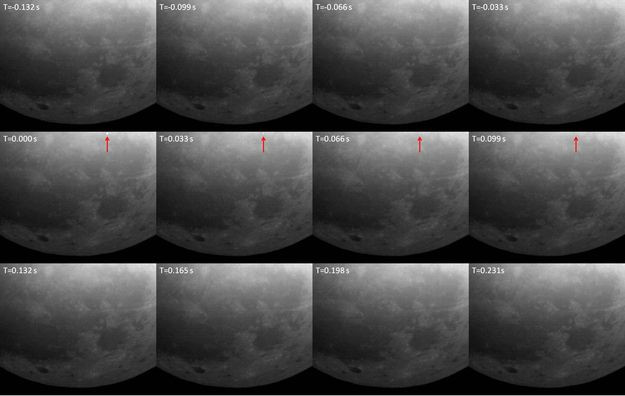Telescope Catches Space Rocks Crashing Into Moon To Understand Earth’s Meteors

Scientists are watching meteors strike the moon in fiery crashes as a way to understand better the danger space rocks pose to Earth.
The European Space Agency said a new system in Greece called Neliota — full name Near-Earth Object Lunar Impacts and Optical Transients — recently has begun detecting the short but bright flashes that light up the moon when a meteor hits the surface and measuring how hot they are. Combined with what scientists already know about how dense these meteors usually are and how fast they would be flying into the moon, the information tells experts about the meteor’s size and mass. From that, they will also know how big a crater the meteor created when it slammed down.
Read: Special Lava Makes This Moon Crater Look Way Younger
In outer space, a rock soaring around could be an asteroid if it’s large or a meteoroid if it’s smaller, but that rock is called a meteor when we see it burning up in Earth’s atmosphere. It’s commonly known as a shooting star when seen at night.
That’s not to be confused with a meteorite, which would be any leftover rock that survives burning up and the subsequent crash onto the planet’s surface.
“Earth and its moon are constantly bombarded by natural space debris,” ESA said. “Most of this material ranges in size from dust particles to small pebbles, although larger objects can appear, unexpectedly, from time to time.”
The agency gave the example of a 65-foot meteor that burned up in the sky above Russia’s Chelyabinsk a few years ago, causing an explosion that resulted in property damage.
“One way to determine the number of larger impactors and the potential impact threat to Earth is to observe the moon, in particular the dark area not illuminated by the sun,” the ESA said.
That’s where Neliota comes in. It’s a partnership between the ESA and the National Observatory of Athens, and it just captured its first meteor.
Neliota uses a telescope with digital cameras to keep watch and record anything that strikes the moon when it is relatively dark, mainly while it is approaching or has just left its new moon phase. It will keep going for almost two years.
In addition to providing insight into how meteors could potentially affect Earth, observing meteor strikes on the moon may also help protect astronauts if any visit in the future, on either a short-term or long-term basis.
Read: Swirls on the Moon are Basically Tan Lines
“One of the dangers humans on the moon would face is that a small asteroid could damage their infrastructure,” ESA said. “Neliota will help estimate the danger from such small asteroids.”
Things are a little different up there because while the Earth has an atmosphere that burns up most of the rocks and particles coming from space, the moon has no atmosphere.
“It cannot block the smaller — but still dangerous — objects,” ESA noted. “It is likely that permanent structures on the moon will be underground, to provide better shielding from both small asteroids or meteoroids and solar radiation.”
© Copyright IBTimes 2024. All rights reserved.





















